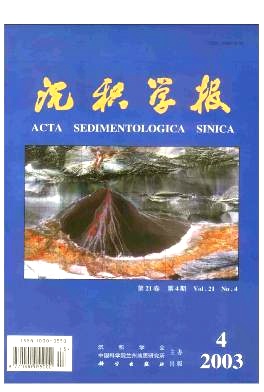MA Su ping, HE Jian qiao, TANG Wei, XIA Yan qing. The Influence of High-pressure Autoclave on Hydrogen Product during Hydrous Simulation Experiment[J]. Acta Sedimentologica Sinica, 2003, 21(4): 713-716.
| Citation:
|
MA Su ping, HE Jian qiao, TANG Wei, XIA Yan qing. The Influence of High-pressure Autoclave on Hydrogen Product during Hydrous Simulation Experiment[J]. Acta Sedimentologica Sinica, 2003, 21(4): 713-716.
|
The Influence of High-pressure Autoclave on Hydrogen Product during Hydrous Simulation Experiment
-
State Key Laboratory of Gas Geochemistry, Lanzhou Institute of Geology, Chinese Academy of Sciences, Lanzhou 730000
- Received Date: 2002-12-04
- Rev Recd Date:
2003-04-14
- Publish Date:
2003-12-10
-
Abstract
Hydrous pyrolysis using hig h-pressure autoclave, nowadays, is a relatively effective way to study petroleum geochemistry,which can simulate the process of oil and gas formation.In general, high percentage hydrogen is often found in the gas pyrolysate produced from organic in hydrous simulation experiments, which employ high-pressure autoclave.Most people beliveve the hydrogen mainly comes from organic reactions.In order to prove this problem, the authors have done a series of simulation experiments.In the experiment, the material of high-pressure autoclave is an alloy made from 1Cr18Ni9Ti and OCr17Ni12Mo2.The temperature of the experiments are under 330 ℃ and 330 ℃ for 72 hours.The quantity of water is accurately calculated.The experiment items include organic and inorganic matters, such as Fushun oil shale,Kaolinite and the deionized water, etc.The results several experiments show that the sources of hydrogen are not only organic reactions but also inorganic reactons.Particularly.the reactions in which only the deionized water is added into the high-pressure autoclave, also release hydrogen. This result proves the reaction between the high-pressure autoclaves and the deionized water at high thermal stress effectively.So the series of simulation experiment using high-pressure autoclave should be thought over and be modified, or the validity of the analysis and explanation of such experiments will be not reliable.
-
References
|
[1]
|
曾国寿,徐梦虹. 石油地球化学[M]. 北京:石油工业出版社, 1990[Zeng Guoshou,Xu Menghong.Petroleum Geochemistry[M].Beijing:Petroleum Industry Press,1990] |
|
[2]
|
傅家谟,秦匡宗. 干酪根地球化学[M]. 广州: 广东科技出版社, 1995[Fu Jiamo,Qin Kuangzong.Kerogen Geochemistry[M].Guangzhou:GuangDong Science and Technology Press,1995] |
|
[3]
|
姜峰,张友联,杜建国. 油气生成模拟实验研究进展[J]. 地球科学进展,1996,11(5): 453~458[Jiang Feng,Zhang Youlian,Du Jianguo.Advance of pyrolysis experimentation on hydrocarbon genesis[J].Advance in Earth Science,1996,11(5):453~458] |
|
[4]
|
Oleh Weres, Amos S Newton, Leon Tsao. Hydrous pyrolysis of alkanes, alkenes, alcohols and ethers[J]. Organic Geochemistry, 1988,12(5):433~444 |
|
[5]
|
Linda Stalker, Stephen R Larter, Paul Farrimond. Biomarker brinding into kerogens: evidence from hydrous pyrolysis using heavy water (D2O)[J]. Organic Geochemistry, 1998,28(3/4): 239~253 |
|
[6]
|
Aanja Barth, Anne Eva Borgund, Anne Lise Hopland. Generation of compounds by hydrous pyrolysis of Kimmeridge oil shale-Bulk results and activation energy calculation[J]. Organic Geochemistry, 1989,14(1):69~76 |
|
[7]
|
Zvi Sofer. Hydrous pyrolysis of monterey,asphaltenes[J]. Organic Geochemistry, 1987,13(4-6):939~945 |
|
[8]
|
Lewan M D. Experiments on the role of water in petroleum formation[J]. Geochemica et Cosmochimica Acta, 1997, 61(17): 3 691~ 3 723 |
|
[9]
|
Lewan M D. Laboratory simulation of petroleum formation in hydrous pyrolysis[A].In: Michael H E, Stephen A M, eds. Organic Geochemistry[C]. New York: Plenum Press, 1993 |
|
[10]
|
Todd O Stevens, James P McKinley. Lithoautotrophic microbial ecosystems in deep basalt aquifers[J]. Science, 1995, 270:450~454 |
-
-
Proportional views

-






 DownLoad:
DownLoad: